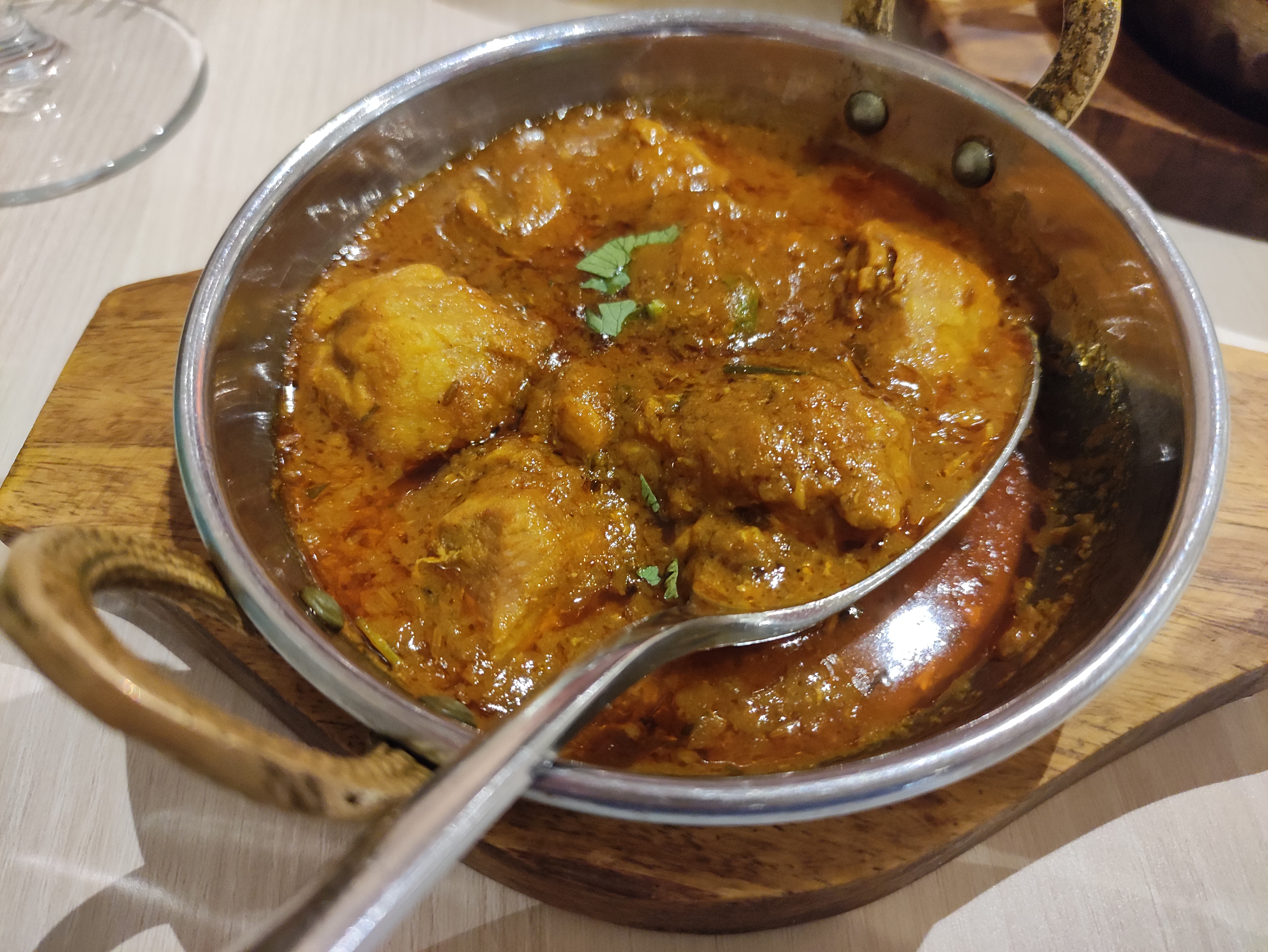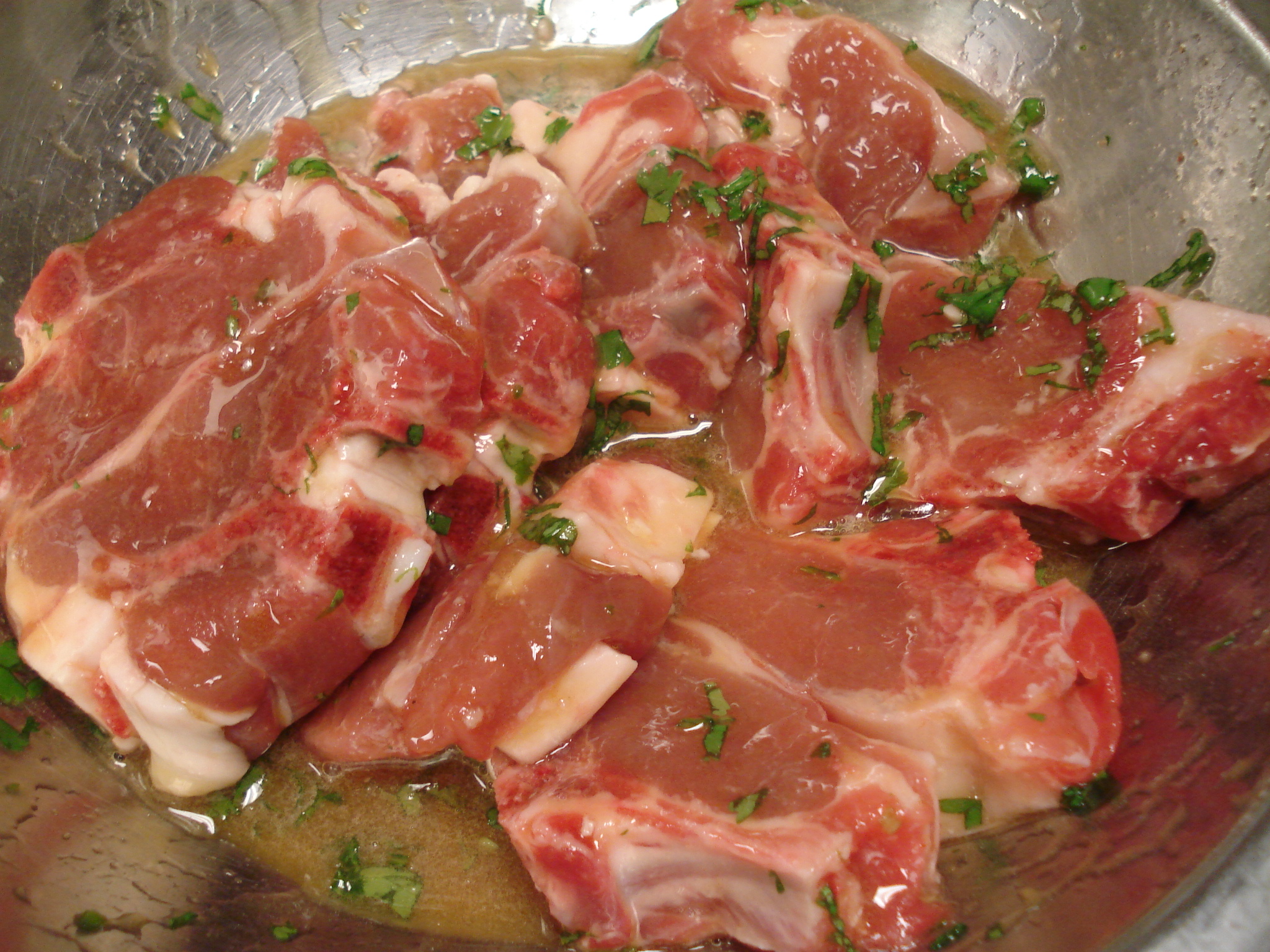|
Somali Cuisine
Somali cuisine is characterized by aromatic spices and robust flavors, reflecting a distinctive blend of rich regional traditions and the influences of expansive trade networks established by Somali merchants, whose long monopoly on spices such as cinnamon has indelibly shaped its flavor profile. In recent years, Somali culinary traditions have gained increasing international recognition, with Somali-American chefs such as Ifrah Ahmed and Hawa Hassan drawing significant attention, a Somali restaurantaur earning a Best Small Business Person in the United States, and London establishments like Al Kahf and Sabiib emerging as popular destinations among food enthusiasts. Some notable Somali specialties include ''kimis'' / ''sabaayad'', ''canjeero'' / ''laxoox'', ''xalwo'' (halwa), ''sambuusa'' (samosa), ''bariis iskukaris'', and ''muqmad'' / ''oodkac''. Pork consumption is forbidden in Somalia in accordance with sharia, as the vast majority of the population are Muslims. Breakfast Break ... [...More Info...] [...Related Items...] OR: [Wikipedia] [Google] [Baidu] |
Canjeero
Lahoh ( , or ), is a spongy, flat pancake-like bread.Mohamed Diriye Abdullahi, ''Culture and Customs of Somalis'', (Greenwood Press: 2001), p. 113. It is a type of flatbread eaten regularly in Somalia, Djibouti, Kenya, Ethiopia, Yemen and Saudi Arabia. Yemenite Jewish immigrants popularized the dish in Israeli cuisine, Israel. It is called ''canjeero/canjeelo'' in southern Somalia and also called ''laxoox''/''lahoh'' in Somaliland, Djibouti, Yemen and Saudi Arabia. Preparation Lahoh is traditionally and typically prepared from a thick Batter (cooking), batter of sorghum flour (preferred flour for making Laxoox), Cornmeal, White cornmeal/cornflour, warm water, Baker's yeast, yeast, and a pinch of salt. The mixture is beaten by hand until soft and creamy. The batter is then left to ferment overnight, to cook, and then is eaten for breakfast. There is a sweet-tasting variety of the dish, one made with Egg (food), eggs, as well as another variety that is spiced and typically eate ... [...More Info...] [...Related Items...] OR: [Wikipedia] [Google] [Baidu] |
Curry
Curry is a dish with a sauce or gravy seasoned with spices, mainly derived from the interchange of Indian cuisine with European taste in food, starting with the Portuguese, followed by the Dutch and British, and then thoroughly internationalised. Many dishes that would be described as curries in English are found in the native cuisines of countries in Southeast Asia and East Asia. The English word is derived indirectly from some combination of Dravidian words. A first step in the creation of curry was the arrival in India of spicy hot chili peppers, along with other ingredients such as tomatoes and potatoes, part of the Columbian exchange of plants between the Old World and the New World. During the British Raj, Anglo-Indian cuisine developed, leading to Hannah Glasse's 18th century recipe for "currey the India way" in England. Curry was then spread in the 19th century by indentured Indian sugar workers to the Caribbean, and by British traders to Japan. Further exchange ... [...More Info...] [...Related Items...] OR: [Wikipedia] [Google] [Baidu] |
Flatbread
A flatbread is bread made usually with flour; water, milk, yogurt, or other liquid; and salt, and then thoroughly rolled into flattened dough. Many flatbreads are Unleavened bread, unleavened, although some are leavened, such as pita bread. A Serving size, serving of 85g (~3 ounces) of pita bread has 234 Calorie, calories. Flatbreads range from below one millimeter to a few centimeters thick so that they can be easily eaten without being sliced. They can be baked in an oven, fried in hot oil, grilled over hot coals, cooked on a hot pan, tava, Comal (cookware), comal, or metal griddle, and eaten fresh or packaged and frozen for later use. History Flatbreads were amongst the earliest food processing, processed foods, and evidence of their production has been found at ancient sites in Mesopotamia, ancient Egypt, and the Indus Valley Civilisation, Indus civilization. The origin of all flatbread baking systems are said to be from the Fertile Crescent in West Asia, where they would su ... [...More Info...] [...Related Items...] OR: [Wikipedia] [Google] [Baidu] |
Kimis
Sabayad, (Somali: Sabaayad) also known as Kimis or Ceesh, is a chewy, slightly flaky type of square Somali flatbread eaten in Somalia, Kenya, Ethiopia and Djibouti. History A very commonly served bread in Somali cuisine, Sabayad is usually eaten during breakfast or dinner. It is made from a dough of plain flour, water and salt. It is generally rolled into rough squares and briefly fried in a pan. See also *Paratha Paratha (, also parantha/parontah) is a flatbread native to the Indian subcontinent, with earliest reference mentioned in early medieval Sanskrit, India. It is one of the most popular flatbreads in the Indian subcontinent and the Middle East. ... * Msemen References External linksSabayaad - Flatbread Unleavened breads Flatbreads Djiboutian cuisine Kenyan cuisine Somali cuisine Somali inventions {{africa-cuisine-stub ... [...More Info...] [...Related Items...] OR: [Wikipedia] [Google] [Baidu] |
Injera
Injera (, ; ; ) is a sour fermented pancake-like flatbread with a slightly spongy texture, traditionally made of teff flour. In Ethiopia and Eritrea, injera is a staple. Injera is central to the dining process in Amhara community, like bread or rice elsewhere and is usually stored in the mesob. Ingredients Traditionally, injera is made with just two ingredients: teff flour and water. Teff flour is ground from the grains of ''Eragrostis tef'', also known as teff, a cereal crop from the Ethiopian Highlands. Teff production is limited to certain middle elevations with adequate rainfall and is a low-yield crop, so it is relatively expensive for the average farming household. Many farmers in the Ethiopian highlands grow their own subsistence grains, so wheat, barley, corn, or rice flour are sometimes used to replace the teff content. Teff seeds are graded according to color, used to make different kinds of injera: ''nech'' (white), ''key'' or ''quey'' (red), and ''sergegna ... [...More Info...] [...Related Items...] OR: [Wikipedia] [Google] [Baidu] |
Muqmad
Muqmad or oodkac is a Somali dish consisting of preserved meat. The term muqmad is used in Djibouti; the term oodkac is more popular in central and southern parts of Somalia. It is typically eaten with canjeero or lahoh Lahoh ( , or ), is a spongy, flat pancake-like bread.Mohamed Diriye Abdullahi, ''Culture and Customs of Somalis'', (Greenwood Press: 2001), p. 113. It is a type of flatbread eaten regularly in Somalia, Djibouti, Kenya, Ethiopia, Yemen and Saud ..., but sometimes by itself. Although it is usually eaten for breakfast and lunch, it is also sometimes eaten for dinner. Muqmad or oodkac is made by letting the meat cook and soak in melted butter, and then cutting it into cubes.Lamb, David. The Arabs: Journeys Beyond the Mirage. Vintage, 2002. References Somali cuisine Dried meat Somali inventions {{africa-cuisine-stub ... [...More Info...] [...Related Items...] OR: [Wikipedia] [Google] [Baidu] |
Goat Meat
Goat meat is the meat of the domestic goat (''Capra hircus''). The term 'goat meat' denotes meat of older animals, while meat from young goats is called 'kid meat'. In South Asian cuisine, goat meat is called mutton, along with sheep meat.''Oxford English Dictionary'', 3rd edition, June 2003blend of "goat" in French and "sheep" in French, was coined in 1922 and selected by a trade association; it was adopted by the United States Department of Agriculture in 1928, however the term never caught on and is not encountered in the United States. "Cabrito", a word in Spanish and Portuguese, is the meat of a young, milk-fed goat. It is also known as chivo meat. In cuisine Goat meat is both a staple and a delicacy in the world's cuisines. The cuisines best known for their use of goat include African cuisine, Middle Eastern, Indian, Indonesian, Nepali, Bangladeshi, Pakistani, Abruzzese, Mexican, Caribbean (Jamaica), Haitian cuisine, Dominican cuisine and Ecuadorian. Cab ... [...More Info...] [...Related Items...] OR: [Wikipedia] [Google] [Baidu] |
Beef
Beef is the culinary name for meat from cattle (''Bos taurus''). Beef can be prepared in various ways; Cut of beef, cuts are often used for steak, which can be cooked to varying degrees of doneness, while trimmings are often Ground beef, ground or minced, as found in most hamburgers. Beef contains protein, iron, and vitamin B12. Along with other kinds of red meat, high consumption is associated with an increased risk of colorectal cancer and coronary heart disease, especially when processed meat, processed. Beef has a high Environmental impact of meat production, environmental impact, being a primary driver of deforestation with the highest greenhouse gas emissions of any agricultural product. In prehistoric times, humans hunted aurochs and later domesticated them. Since that time, numerous beef cattle, breeds of cattle have been Selective breeding, bred specifically for the quality or quantity of their meat. Today, beef is the third most widely consumed meat in the world, aft ... [...More Info...] [...Related Items...] OR: [Wikipedia] [Google] [Baidu] |
Sesame Oil
Sesame oil is an edible vegetable oil derived from sesame seeds. The oil is one of the earliest-known crop-based oils. Worldwide mass modern production is limited due to the inefficient manual harvesting process required to extract the oil. Oil made from raw seeds, which may or may not be cold-pressed, is used as a cooking oil. Oil made from toasted seeds is used for its distinctive nutty aroma and taste, although it may be unsuitable for frying, which makes it taste burnt and bitter. Manufacture Manufacturing process Sesame seeds are protected by a capsule which bursts only when the seeds are completely ripe, a process called dehiscence. The dehiscence time tends to vary, so farmers cut plants by hand and place them together in an upright position to continue ripening, until all the capsules have opened. Tanzania remains the largest producer of sesame oil and also dominates the global consumption of this product. The African and Asian regions constitute the fastest-de ... [...More Info...] [...Related Items...] OR: [Wikipedia] [Google] [Baidu] |
Olive Oil
Olive oil is a vegetable oil obtained by pressing whole olives (the fruit of ''Olea europaea'', a traditional Tree fruit, tree crop of the Mediterranean Basin) and extracting the oil. It is commonly used in cooking for frying foods, as a condiment, or as a salad dressing. It can also be found in some cosmetics, pharmaceuticals, soaps, and fuels for traditional oil lamps. It also has additional uses in some religions. The olive is one of three core food plants in Mediterranean cuisine, with wheat and grapes. Olive trees have been cultivated around the Mediterranean since the 8th millennium BC. In 2022, Spain was the world's largest producer, manufacturing 24% of the world's total. Other large producers were Italy, Greece, and Turkey, collectively accounting for 59% of the global market. The composition of olive oil varies with the cultivar, altitude, time of harvest, and extraction process. It consists mainly of oleic acid (up to 83%), with smaller amounts of other fatty acids ... [...More Info...] [...Related Items...] OR: [Wikipedia] [Google] [Baidu] |





